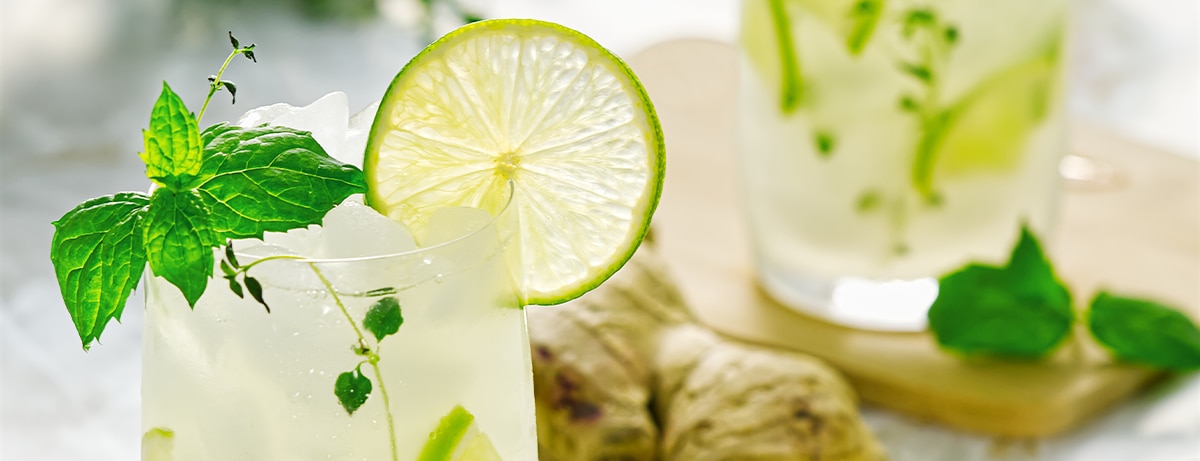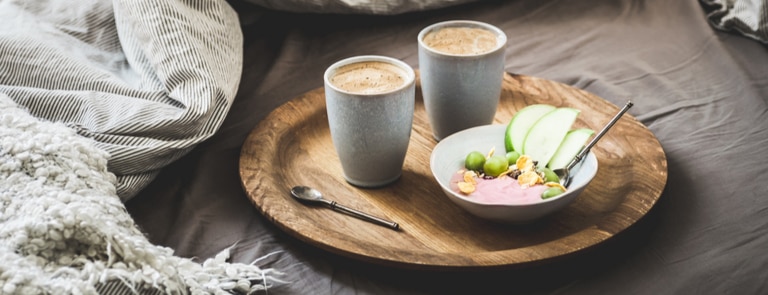20% off €40
Digestion: The only overview you need

Summary
1What is the digestive system?
Although we eat food, our digestive system doesn’t absorb food – it absorbs nutrients. So, our food has to be broken down…
2Why is digestive health so important?
The digestive system takes the food that we eat and breaks it down into nutrients. Once the nutrients are small enough…
3How long does it take to digest food?
The time it takes for food to move through the full gastrointestinal tract (GI) depends on the type and amount…
What is the digestive system?


Why is digestive health so important?

How does the digestive system work?
Function: your teeth break food down into small pieces, while the sight and smell of a delicious meal wakes up your salivary glands.
Saliva lubricates and further breaks down food with the help of an enzyme called amylase, which starts to turn carbohydrates into sugars.6
What can go wrong: rushing your meal or talking while you eat means you can swallow air, leading to burping, bloating or flatulence.7
Keep it healthy: friendly bacteria aren’t just beneficial for your gut – studies show they can be good for our dental health too.
Did you know: the average person produces one litre of saliva every day.6
Function: once swallowed, food passes down your oesophagus, or gullet, to your stomach via automatic waves or contractions, known as peristalsis.6
What can go wrong: if stomach acid travels back up into your oesophagus, you can get heartburn: a burning sensation in your chest. Stress, obesity, smoking and certain food and medicine can increase the risk of heartburn.8
Keep it healthy: stopping smoking can help prevent heartburn and stomach ulcers and reduce your risk of developing Crohn’s disease and gallstones, too.9,10
Did you know: peristalsis (the wave-like contractions that move food through your digestive tract) is so powerful that food would reach your stomach, even if you were eating upside down.11
Function: pressure from food travelling down the oesophagus sends a signal to the valve at the top of your stomach to open.
In the stomach, gastric juices containing stomach acid and various digestive enzymes break down proteins, creating a liquid called chyme.12 Chyme is then moved out of your stomach by peristalsis into your small intestine.
What can go wrong: if the protective layer lining the inside of your stomach gets damaged, contact with stomach acid can result in an ulcer. This damage can be caused by the H.pylori bacteria or overuse of anti-inflammatory drugs such as ibuprofen.13
Keep it healthy: avoid rushing your meals and maybe practice some yoga – research shows certain yoga postures can help support your gastrointestinal health, while exercise, in general, helps to increase the friendly bacteria in your gut.
Did you know: your stomach acid is strong enough to dissolve metal14
Function: the small intestine, also known as the small bowel (technically made up of the duodenum, jejunum and ileum), is where most nutrients are absorbed into your bloodstream through villi – tiny, finger-like structures that line the walls of your small intestine.15
What can go wrong: a lack of some digestive enzymes can make it difficult to digest certain foods, causing food intolerances. Symptoms include stomach ache, bloating, flatulence and diarrhoea.16
Keep it healthy: help support the good bacteria living in your gut by eating a high-fibre diet – aim for around 30g a day – and consider incorporating fermented foods, such as sauerkraut, kefir or kombucha. If you don’t currently eat a lot of fibre, introduce it slowly by gradually increasing the amount every few days, along with staying hydrated.
Did you know: the small intestine can be up to an impressive six metres long.17
Function: your liver makes bile, which is then stored in your gallbladder and released into your small intestine to break down fats.
Meanwhile, your pancreas produces digestive enzymes that are used by the digestive system to help break down carbohydrates, protein and fats until they are small enough to be absorbed into your bloodstream.6
What can go wrong: a fatty diet with too much junk food or drinking too much alcohol can cause fat to build up in your liver, which significantly raises your risk of developing liver disease.18,19
Keep it healthy: look after your liver by reducing your drinking and upping your intake of liver-supporting foods, such as broccoli.
Did you know: your liver has more than 500 functions and is your body’s largest solid organ, weighing between 1.3kg and 1.8kg.20
Function: finally, food reaches your large intestine, also called the colon or large bowel, where water and remaining nutrients are absorbed. This makes waste products – yes, we’re talking about poo – solid and easier to pass.
When enough waste builds up in your rectum, the lowest part of your large intestine, you feel the urge to go to the loo.6
What can go wrong: not eating enough fibre can slow your digestion down, leading to constipation.21
Keep it healthy: drink plenty of fluids, as this can reduce the risk of constipation.21 Keep your stress levels in check, too – stress hormones can contribute to digestive problems, such as diarrhoea.22
Did you know: poo stays in the large intestine for an average of 30-40 hours.23
How long does it take to digest food?
What foods are hardest to digest?

Can food stay in your stomach for days?
Lifestyle tips for better digestion
- Minimise stress – stress is one the major lifestyle factors that impacts digestive health. Higher stress levels reduce the diversity of the gut bacteria and increase the risk of digestive disorders. Where possible, take regular breaks, spend time outside, establish a good work-life balance and explore aromatherapy and breathing techniques
- Sleep well – sleep quality and gut health are connected. Sleep deprivation can lead to changes in the gut microbiota, affecting digestive health
- Exercise regularly – exercising helps enrich the diversity of bacteria in the gut and reduces the risk of putting on weight, which can cause digestive disorders
- Reduce your alcohol intake – alcohol causes inflammation in the gut and can have an adverse effect on your health and wellbeing
- Drink plenty of water – staying hydrated helps to regulate bowel movements. Speaking of bowel movements…..
How many times a day should you poo?
When to see your GP

The final say
The advice in this article is for information only and should not replace medical care. Please check with your GP or healthcare professional before trying any supplements, treatments or remedies. Food supplements must not be used as a substitute for a varied and balanced diet and a healthy lifestyle.
- Common digestive problems and how to treat them [Internet]. nhs.uk. 2018. Available from: https://www.nhs.uk/live-well/eat-well/common-digestive-problems-and-how-to-treat-them/
- guts uk. Healthy Eating and the Digestive System - Guts UK [Internet]. Guts UK. 2018. Available from: https://gutscharity.org.uk/advice-and-information/health-and-lifestyle/diet/
- Lee YY, Erdogan A, Rao SSC. How to assess regional and whole gut transit time with wireless motility capsule. Journal of Neurogastroenterology and Motility [Internet]. 2014 Apr 30;20(2):265–70. Available from: https://pubmed.ncbi.nlm.nih.gov/24840380/
- Zheng D, Liwinski T, Elinav E. Interaction between microbiota and immunity in health and disease. Cell Research. 2020 May 20;30(6):492–506.
- Carabotti M, Scirocco A, Maselli MA, Severi C. The gut-brain axis: interactions between enteric microbiota, central and enteric nervous systems. Annals of gastroenterology [Internet]. 2015;28(2):203–9. Available from: https://www.ncbi.nlm.nih.gov/pmc/articles/PMC4367209/
- Peyrot des Gachons C, Breslin PAS. Salivary amylase: Digestion and Metabolic Syndrome. Current Diabetes Reports [Internet]. 2016 Oct 16;16(10):102. Available from: https://www.ncbi.nlm.nih.gov/pmc/articles/PMC6825871/
- NHS. Bloating [Internet]. nhs.uk. 2022. Available from: https://www.nhs.uk/conditions/bloating/
- NHS. Heartburn and acid reflux [Internet]. NHS. 2019. Available from: https://www.nhs.uk/conditions/heartburn-and-acid-reflux/
- Berkowitz L, Schultz BM, Salazar GA, Pardo-Roa C, Sebastián VP, Álvarez-Lobos MM, et al. Impact of Cigarette Smoking on the Gastrointestinal Tract Inflammation: Opposing Effects in Crohn’s Disease and Ulcerative Colitis. Frontiers in Immunology [Internet]. 2018 Jan 30;9(74). Available from: https://www.ncbi.nlm.nih.gov/pmc/articles/PMC5797634
- Aune D, Vatten LJ, Boffetta P. Tobacco smoking and the risk of gallbladder disease. European Journal of Epidemiology. 2016 Feb 22;31(7):643–53.
- Allen ML, Zamani S, Dimarino AJ. The effect of gravity on oesophageal peristalsis in humans. Neurogastroenterology and Motility: The Official Journal of the European Gastrointestinal Motility Society [Internet]. 1997 Jun 1;9(2):71–6. Available from: https://pubmed.ncbi.nlm.nih.gov/9198082/
- Hsu M, Forshing Lui. Physiology, Stomach [Internet]. Nih.gov. StatPearls Publishing; 2023. Available from: https://www.ncbi.nlm.nih.gov/books/NBK535425/
- NHS. Overview - Stomach ulcer [Internet]. NHS. 2019. Available from: https://www.nhs.uk/conditions/stomach-ulcer/
- Li PK, Spittler C, Taylor CW, Sponseller D, Chung RS. In vitro effects of simulated gastric juice on swallowed metal objects: implications for practical management. Gastrointestinal Endoscopy. 1997 Aug;46(2):152–5.
- How our digestive system works and keeping it healthy [Internet]. GOSH Hospital site. Available from: https://www.gosh.nhs.uk/wards-and-departments/departments/clinical-specialties/gastroenterology-information-parents-and-visitors/how-our-digestive-system-works-and-keeping-it-healthy/#:~:text=The%20small%20intestine%20is%20where
- NHS Choices. Causes - Lactose intolerance [Internet]. NHS. 2019. Available from: https://www.nhs.uk/conditions/lactose-intolerance/causes/
- Collins JT, Badireddy M, Nguyen A. Anatomy, Abdomen and Pelvis, Small Intestine [Internet]. Nih.gov. StatPearls Publishing; 2019. Available from: https://www.ncbi.nlm.nih.gov/books/NBK459366/
- NHS . Non-alcoholic fatty liver disease (NAFLD) [Internet]. NHS. 2022. Available from: https://www.nhs.uk/conditions/non-alcoholic-fatty-liver-disease/
- NHS . Alcohol-related liver disease [Internet]. NHS. 2019. Available from: https://www.nhs.uk/conditions/alcohol-related-liver-disease-arld/
- 5 facts about the liver [Internet]. British Liver Trust. Available from: https://britishlivertrust.org.uk/about-us/media-centre/5-facts-about-the-liver/#:~:text=The%20liver%20is%20the%20largest
- NHS inform. Constipation symptoms and treatments [Internet]. Nhsinform.scot. 2019. Available from: https://www.nhsinform.scot/illnesses-and-conditions/stomach-liver-and-gastrointestinal-tract/constipation
- NHS. How to get more fibre into your diet [Internet]. nhs.uk. 2022. Available from: https://www.nhs.uk/live-well/eat-well/digestive-health/how-to-get-more-fibre-into-your-diet/#:~:text=There%20is%20strong%20evidence%20that
- Lee YY, Erdogan A, Rao SSC. How to assess regional and whole gut transit time with wireless motility capsule. Journal of Neurogastroenterology and Motility [Internet]. 2014 Apr 30;20(2):265–70. Available from: https://pubmed.ncbi.nlm.nih.gov/24840380/
- Harvey RF, Pomare EW, Heaton KW. EFFECTS OF INCREASED DIETARY FIBRE ON INTESTINAL TRANSIT. The Lancet. 1973 Jun;301(7815):1278–80.




